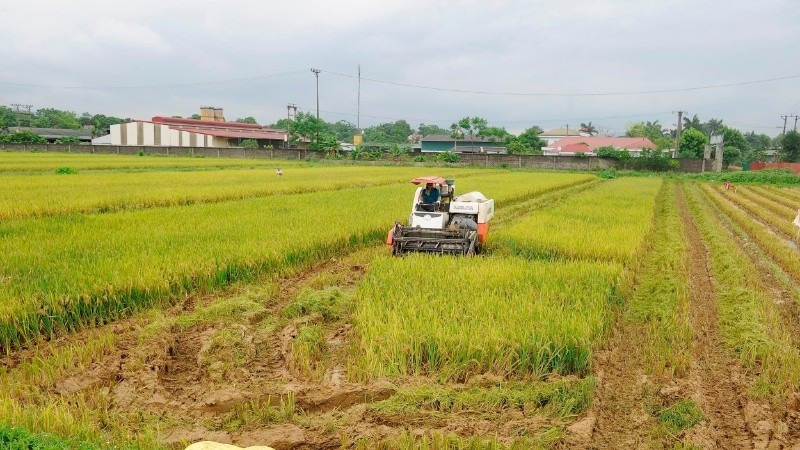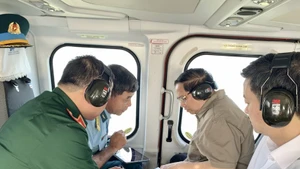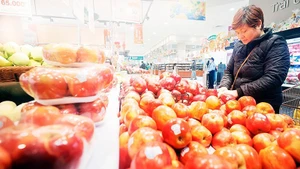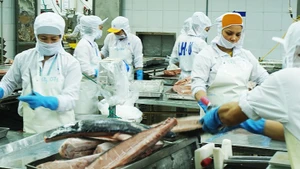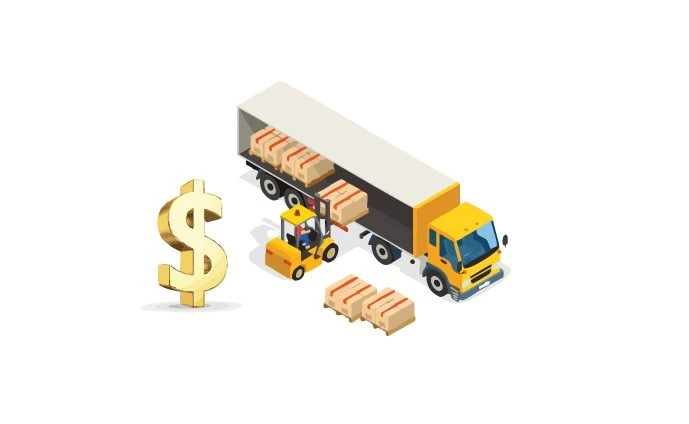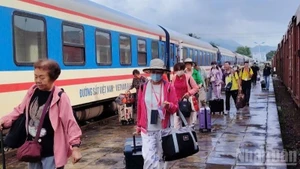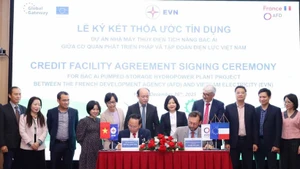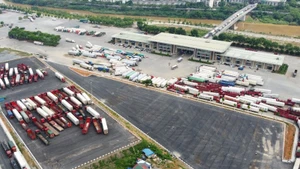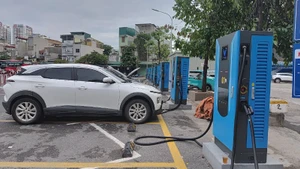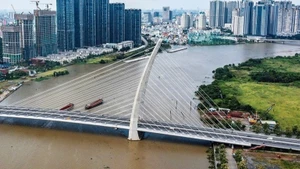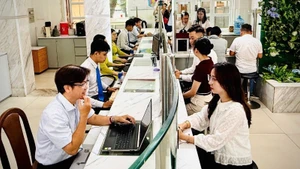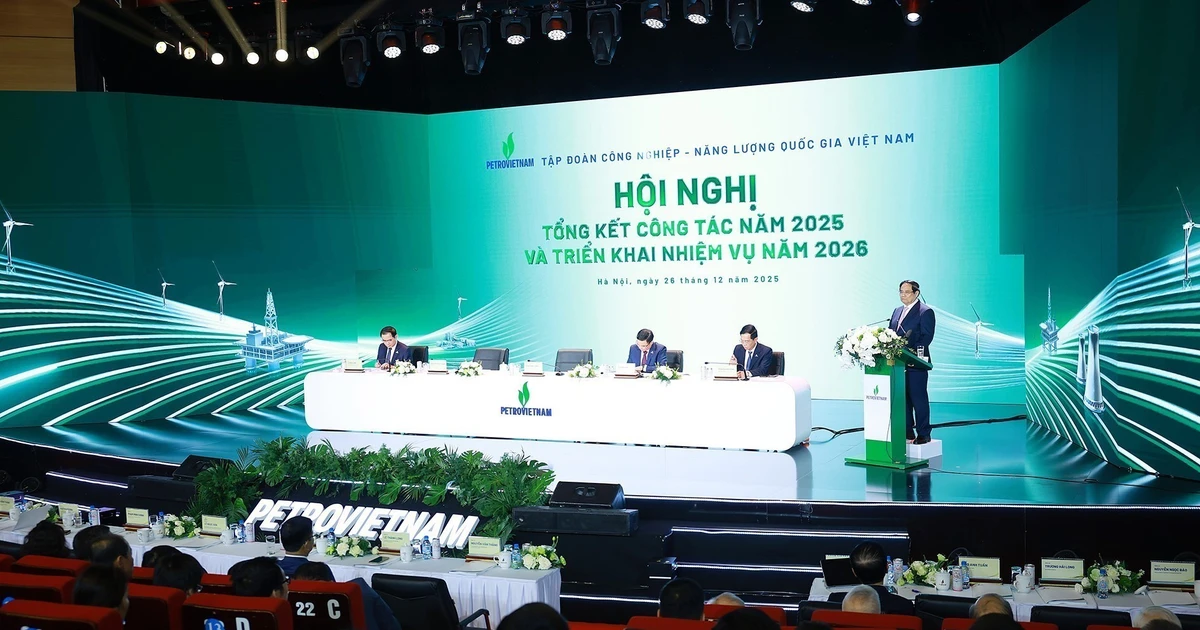Tran Van Chung, Director of Phat Tai Agricultural Cooperative in Chau Thanh Commune, Vinh Long Province, said that for the summer-autumn crop of 2024, the cooperative began piloting rice cultivation under the project titled “Sustainable development of one million hectares of high-quality, low-emission rice cultivation associated with green growth in the Mekong Delta by 2030” on an area of 48.4 hectares with the OM 5451 rice variety, attracting the participation of nearly 50 households.
When joining the model, functional agencies guided farmers on alternate wetting and drying irrigation, nutrient management, the rational use of seeds, fertilisers and pesticides, as well as skills in managing and effectively using straw. This has produced remarkable results: each hectare under cluster sowing required only 60–70 kg of seeds, with 100–120 kg under row sowing, compared with the traditional average of 200–220 kg per hectare. At the end of the season, input costs decreased, productivity increased, and particularly emissions were significantly reduced.
According to Nguyen Thi Thu Huong, Deputy Director of the Department of Plant Production and Protection (Ministry of Agriculture and Environment), the application of low-emission cultivation practices such as alternate wetting and drying (AWD), integrated nutrient management, organic farming, precision agriculture, and climate-smart agriculture has significantly reduced agricultural inputs such as chemical fertilisers, pesticides, and irrigation water. This has lowered production costs and increased farmers’ profits. Specifically, applying these models, methane emissions dropped by an average of 30–45%, irrigation water usage was reduced by 20–30%, while the substantial savings in seeds and fertilisers and the reduced pesticide spraying helped cut input costs by 5–10%, thereby raising farmers’ incomes by 10–20%.
In addition to rice, other crop groups such as maize, cassava, soybeans, vegetables, and fruit trees also hold great potential for applying low-emission cultivation solutions. According to former Deputy Minister of Agriculture and Rural Development (now Ministry of Agriculture and Environment) Le Quoc Doanh, low-emission crop production models not only address economic issues but also provide an important basis for Viet Nam to gradually approach and effectively participate in both voluntary and compulsory carbon credit markets.
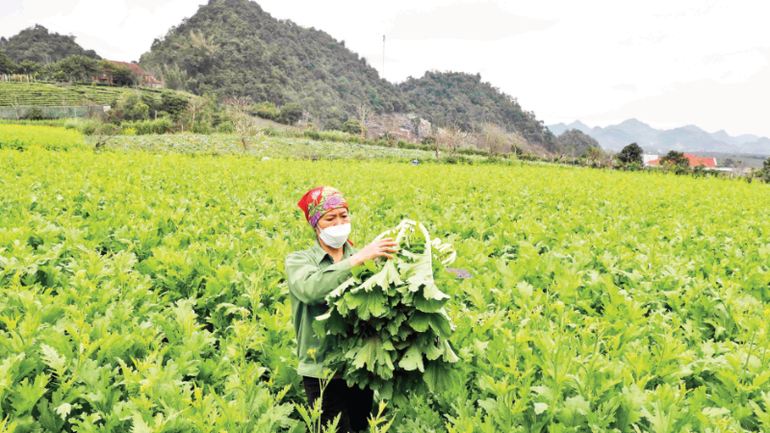
According to the Ministry of Agriculture and Environment, crop cultivation is the largest source of emissions in agricultural production, accounting for about 80% of the sector’s total emissions, mainly methane from wet rice cultivation. Low-emission crop production is part of Viet Nam’s general policy of achieving net-zero emissions by 2050. Although the agriculture sector has made many efforts in recent years, crop cultivation has so far only reached the level of small, fragmented projects and programmes; it has been lacking a fundamental and strategic approach.
Nguyen Thi Thu Huong noted that Viet Nam’s low-emission crop cultivation system still lacks a comprehensive national-level programme, clear financial incentives and support mechanisms, and national standards and criteria for “low-emission crop cultivation”. There is not yet a standardised measurement, reporting and verification (MRV) system, leading to difficulties in assessing real impacts and in integrating into carbon credit mechanisms.
According to the Ministry of Agriculture and Environment, crop cultivation is the largest source of emissions in agricultural production, accounting for about 80% of the sector’s total emissions, mainly methane from wet rice cultivation. Low-emission crop production is part of Viet Nam’s general policy of achieving net-zero emissions by 2050.
Given the urgent practical demands, the agricultural sector is developing a plan for low-emission crop production zones for the 2025–2035 period, with a vision to 2050. This plan sets the target of cutting at least 10% of greenhouse gas emissions in crop cultivation by 2030, contributing to a 30% reduction in methane compared with 2020. It also aims to establish at least 15 low-emission production zone models and develop five technical packages for major crops such as wet rice, maize, pepper, coffee, dragon fruit, bananas, citrus fruits, and perennial industrial crops. The plan also requires the development of an MRV system and an emission database by ecological zones to ensure transparency in reductions, aiming to integrate carbon credits in line with international standards.
Major agricultural markets around the world are tightening requirements on carbon emissions, sustainability certification, traceability, and environmental protection. Delays in implementing low-emission production programmes could cause difficulties for Vietnamese agricultural products in export, reducing competitiveness, especially in the context of deep economic integration and the enforcement of new-generation free trade agreements (FTAs).
The Ministry of Agriculture and Environment is urgently reviewing and assessing the current greenhouse gas emissions of major crops, soon establishing a national strategy for this field, while focusing on improving institutions, tools and support policies.
